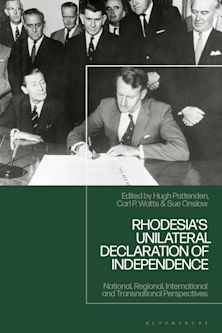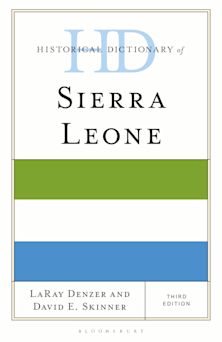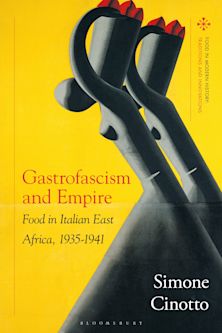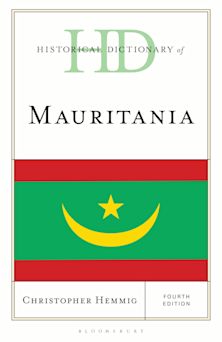- Home
- ACADEMIC
- History
- African History
- Making Cairo Medieval
Making Cairo Medieval
Nezar AlSayyad (Anthology Editor) , Irene A. Bierman (Anthology Editor) , Nasser Rabbat (Anthology Editor) , Heba Farouk Ahmed (Contributor) , Khaled Fahmy (Contributor) , Derek Gregory (Contributor) , Nairy Hampikian (Contributor) , May al-Ibrashy (Contributor) , Donald Preziosi (Contributor) , Caroline Williams (Contributor)
Making Cairo Medieval
Nezar AlSayyad (Anthology Editor) , Irene A. Bierman (Anthology Editor) , Nasser Rabbat (Anthology Editor) , Heba Farouk Ahmed (Contributor) , Khaled Fahmy (Contributor) , Derek Gregory (Contributor) , Nairy Hampikian (Contributor) , May al-Ibrashy (Contributor) , Donald Preziosi (Contributor) , Caroline Williams (Contributor)
This product is usually dispatched within 1 week
- Delivery and returns info
-
Free CA delivery on orders $40 or over
You must sign in to add this item to your wishlist. Please sign in or create an account
Description
During the nineteenth century, Cairo witnessed once of its most dramatic periods of transformation. Well on its way to becoming a modern and cosmopolitan city, by the end of the century, a 'medieval' Cairo had somehow come into being. While many Europeans in the nineteenth century viewed Cairo as a fundamentally dual city-physically and psychically split between East/West and modern/medieval-the contributors to the provocative collection demonstrate that, in fact, this process of inscription was the result of restoration practices, museology, and tourism initiated by colonial occupiers. The first edited volume to address nineteenth-century Cairo both in terms of its history and the perception of its achievements, this book will be an essential text for courses in architectural and art history dealing with the Islamic world.
Table of Contents
Part 2 A Medieval City for a Modern World
Chapter 3 Disciplining the Eye: Perceiving Medieval Cairo
Chapter 4 The Medieval Link: Maqrizi's Khitat and Modern Narratives of Cairo
Chapter 5 'Ali Mubarark's Egypt: Between the Testimony of 'Alamuddin and the Imaginary of the Khitat
Part 6 Representing and Narrating
Chapter 7 Performing Cairo: Orientalism and the City of the Arabian Nights
Chapter 8 Nineteenth-Century Images of Cairo: From the Real to the Interpretive
Chapter 9 The Museum of What You Shall Have Been
Part 10 Disciplining and Making
Chapter 11 Nineteenth-Century Cairo: A Dual City?
Chapter 12 Modernizing Cairo: A Revisionist Narrative
Chapter 13 Medievalization of the Old City as an Ingredient of Cairo's Modernization: Case Study of Bab Zuwayla
Chapter 14 The Cemeteries of Cairo and the Comité de Conservation
Product details
| Published | Mar 25 2005 |
|---|---|
| Format | Hardback |
| Edition | 1st |
| Extent | 272 |
| ISBN | 9780739109151 |
| Imprint | Lexington Books |
| Dimensions | 236 x 158 mm |
| Series | Transnational Perspectives on Space and Place |
| Publisher | Bloomsbury Publishing |
About the contributors
Reviews
-
Making Cairo Medieval will fascinate any scholar who cares about cities, their histories, their transformations, and efforts to control them. It was French specialists and amateurs at the 1867 Paris Exposition who first designated a specific area as 'Islamic Cairo,' though Cairenes soon became active agents. While historic preservation was the ostensible goal, artistic classifications, historical knowledge, cultural hierarchies, urban design, property ownership, tourism, and colonial power all played a role, giving a distinct orientalist tone to the enterprise. The essays offer an illuminating variety of perspectives on the cultural, architectural, political, economic, and intellectual intentions and effects of this immense, ongoing urban project.
Gwendolyn Wright, professor, Graduate School of Architecture, Planning and Preservation, Columbia University
-
Typically, scholarship of the urban development of Cairo has emphasized the dichotomy between its 'medieval' and it's 'modern' quarters, with little critical analysis about how this notion of a dual city came about, and the impacts of this treatment on both perceptions of Cairo and on its subsequent development. Through the work of ten scholars, Making Cairo Medieval examines the idea of a 'medieval Cairo'-a concept developed in the nineteenth century by people who were essentially outsiders to the historic quarters of the city, yet whose ideas of refashioning such neighborhoods to create a 'medievalized' Cairo continue to affect the policies governing these quarters of the city today…. To readers with more than a passing interest in the urban history of the city, Making Cairo Medieval is a good re-assessment of frameworks too often taken for granted…. The book is valuable in pointing out how deceptive an orchestrated (though seemingly natural) process of urban change can be.
Seif El Rashidi, Urban Planner, Aga Khan Cultural Services, Egypt, H-Net: Humanities and Social Science Reviews Online
-
The Egyptian, American, and European-based contributors to Making Cairo Medieval offer a fresh perspective on an early instance of what has come to be known as the heritage industry. The book balances textual analyses with on-the-ground case studies to shed light on various aspects of this complex transformation.
International Third World Studies Journal and Review
-
Making Cairo Medieval offers an exciting reappraisal of how and why the city was refashioned in the modern era. Exploring the ways this urban transformation was engineered, portrayed, fought over, and experienced, the book brilliantly illuminates the recent past of the Arab world's great metropolis.
Timothy Mitchell, author of Colonising Egypt


































